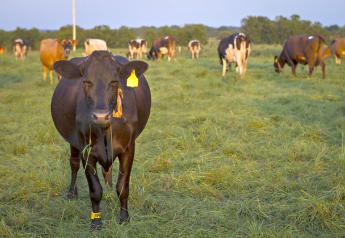Consider Low-Input Beef-Heifer Development

The following commentary does not necessarily reflect the views of AgWeb or Farm Journal. The opinions expressed below are the author's own.
Ranchers place a high priority on heifer pregnancy rates, while also understanding that, at some level, high development costs can cancel out the economic advantage of a small increase in pregnancy. They also recognize that heifers bred to calve early in the calving season set themselves up for future productivity and longevity in the herd.
While the “best” heifer-development system depends on market trends and an individual ranch’s resources, several studies have shown that low-input, range-based systems compare favorably with more intensive drylot development. Results of a recent University of Nebraska trial, reported in the 2017 Nebraska Beef Cattle Report, helps reinforce that concept.
In the four-year trial, researchers managed 400 heifers in four development groups. Beginning at an average of 518 pounds, the groups were grazed on native range, grazed on corn residue or placed in a feedlot on either high-energy or lower-energy ration. The native-range and corn-residue groups were supplemented with 1 pound per day of dried distillers’ grains with 29% crude protein.
Following the 170-day development period, all heifers were managed together in a drylot during estrus synchronization and AI. To compare the systems, the researchers monitored weight gains at several stages, pregnancy rates and calving dates.
Not surprisingly, the heifers in the high-energy drylot system gained weight the fastest and were heavier at breeding compared with those in the other development systems. After breeding, the other groups gained faster and the weight differences narrowed, although the drylot heifers remained somewhat heavier at final pregnancy diagnosis.
Pregnancy rates following artificial insemination and final pregnancy rates did not significantly differ between the management groups. The native-range group had a numeric advantage in the percentage of heifers calving during the first 21 days of the calving season, at 81%.
In this trial, development costs were similar across the four production systems. In other trials, the lower-input grazing systems have generated lower costs compared with drylot heifer development. The researchers note that fluctuations in feed prices and sale values for open heifers during the trial period likely influenced the economic-analysis results in this trial. However, the results demonstrate that lower-input, grazing-based systems provide viable options for heifer development, and ranchers can base their decisions on forage resources and feed prices.
The full report is available online from the University of Nebraska.
For more on managing inputs in developing beef heifers, see these articles from BovineVetOnline:
How to Increase the Proportion of Early Calving Heifers and Cows
Body Condition Score at Calving is the Key to Young Cow Success
Importance of Cow Nutrition from Calving Through Breeding







